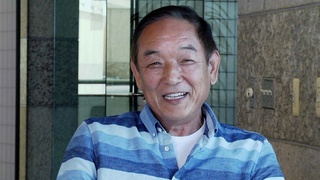Interviews
Leaving to Argentina (Spanish)
(Spanish) I left from the port of Kobe, with forty-six days of travel on the Pacific Ocean, Indian Ocean, and Atlantic Ocean. It was more or less forty-six days. But my leaving Japan was not so emotional, because I received orders to board and I went to the port of Kobe. There was a workers’ strike…and the ship did not leave. The ship was unable to depart until the strike was settled. We had to wait. Everyday I went to the port at 8:00 A.M. I was staying at the home of my uncle and aunt, and I told them: “Uncle and Aunt, you accompanied me. Forget it. I leave everyday at 8:00 in the morning. If the ship doesn’t leave, I will return…and if it doesn’t leave again, I will return the following morning, and if I don’t return you can assume that I left with the ship.” This going back and forth lasted for about ten days…everyday I returned to my uncle’s house at 12:00…and he had become accustomed to me coming back. [He would say,] “Ah, again! “You will return!” Until one day I didn’t return. In reality, at that time, to leave by ship made for a sad departure. Many people cried, the ship had a banner, and with the port and Hotaru music (not Hikari music), of saying goodbye (bon voyage)…that was dramatic enough. But nobody came to see me off. [Then my life became] “At what time do you leave?” “At 8:00 P.M.” “I am going to sleep a little and at 8:00 I woke up, at least I want to say goodbye to Japan.” I awakened, looked at my watch, it was 8:00. I went to the window, it was still clear. “How strange! The day was so long,” and I called the porter. “Did we leave?” He answered, “The ship left at 8:00 but yesterday.” When I awoke we were in the middle of the Pacific Ocean…thus, it was for the best, I didn’t feel sentimental or anything like that.
Date: February 23, 2007
Location: Buenos Aires, Argentina
Interviewer: Takeshi Nishimura, Ricardo Hokama
Contributed by: Centro Nikkei Argentino
Explore More Videos

Immigration ship Brazil-maru (Japanese)
Shin Issei – owner of izakaya (Japanese-style tavern) and kappo (small Japanese diner) restaurant, Honda-Ya

Great grandfather Asato was a sumo wrestler
Okinawan American whose parents are from Peru.

Grandfather loved to tell her stories of her great-grandfather Arakaki
Okinawan American whose parents are from Peru.

Parents leaving Peru to move to California
Okinawan American whose parents are from Peru.

Grandfather migrating to Colombia
(b.1974) Japanese Colombian who currently resides in the United States

What made your parents decide to move to Brazil?
Professor of Law, University of Sao Paulo, Lawyer, Translator (b. 1948)

Moving to and living in Japan
Japanese American Creative designer living in Japan



Family interrelations between mother and father
(1926 - 2012) Scholar and professor of anthropology. Leader in the establishment of ethnic studies as an academic discipline

Going back to Hawaii
An expert researcher and scholar on Japanese immigrant clothing.

Picture brides and karifufu
An expert researcher and scholar on Japanese immigrant clothing.

Kibei schoolchildren in Hiroshima, Japan
(b.1913) Kibei from California who served in the MIS with Merrill’s Marauders during WWII.

Mother's immigration to U.S. as a treaty merchant
(b. 1927) Japanese American Nisei. Family voluntarily returned to Japan during WWII.

Arranged marriage
(b.1912) Japanese Canadian Issei. Immigrated with husband to Canada in 1931
